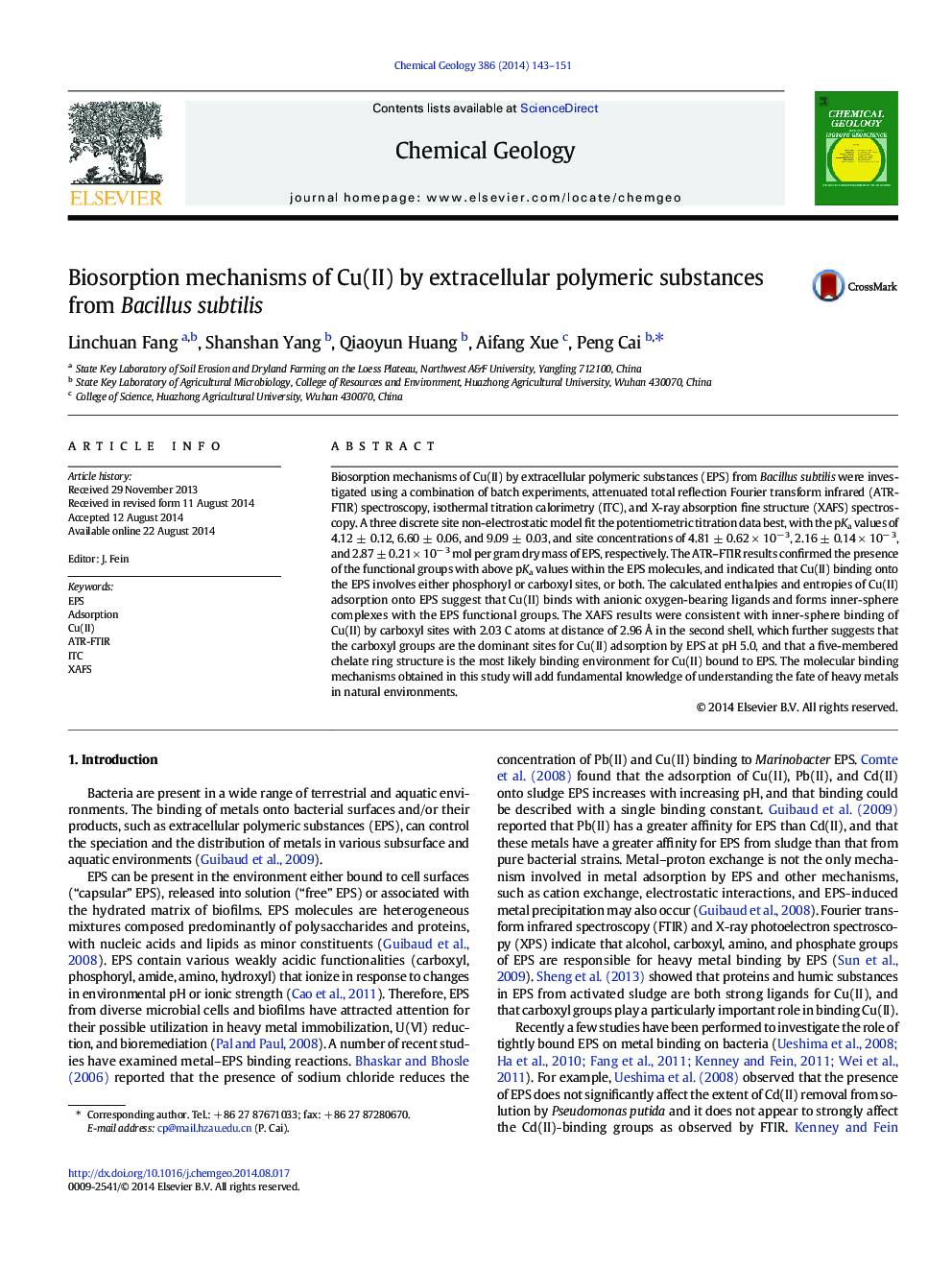| کد مقاله | کد نشریه | سال انتشار | مقاله انگلیسی | نسخه تمام متن |
|---|---|---|---|---|
| 4698661 | 1637586 | 2014 | 9 صفحه PDF | دانلود رایگان |

• Bacterial EPS has a considerable potential for binding metals.
• Cu(II) binds with anionic oxygen-bearing ligands and forms inner-sphere complexes with the EPS.
• The carboxyl groups are the dominant adsorption sites at pH 5.0.
• The five-membered chelate ring structure is the most likely binding environment for Cu(II) bound to EPS.
Biosorption mechanisms of Cu(II) by extracellular polymeric substances (EPS) from Bacillus subtilis were investigated using a combination of batch experiments, attenuated total reflection Fourier transform infrared (ATR-FTIR) spectroscopy, isothermal titration calorimetry (ITC), and X-ray absorption fine structure (XAFS) spectroscopy. A three discrete site non-electrostatic model fit the potentiometric titration data best, with the pKa values of 4.12 ± 0.12, 6.60 ± 0.06, and 9.09 ± 0.03, and site concentrations of 4.81 ± 0.62 × 10− 3, 2.16 ± 0.14 × 10− 3, and 2.87 ± 0.21 × 10− 3 mol per gram dry mass of EPS, respectively. The ATR–FTIR results confirmed the presence of the functional groups with above pKa values within the EPS molecules, and indicated that Cu(II) binding onto the EPS involves either phosphoryl or carboxyl sites, or both. The calculated enthalpies and entropies of Cu(II) adsorption onto EPS suggest that Cu(II) binds with anionic oxygen-bearing ligands and forms inner-sphere complexes with the EPS functional groups. The XAFS results were consistent with inner-sphere binding of Cu(II) by carboxyl sites with 2.03 C atoms at distance of 2.96 Å in the second shell, which further suggests that the carboxyl groups are the dominant sites for Cu(II) adsorption by EPS at pH 5.0, and that a five-membered chelate ring structure is the most likely binding environment for Cu(II) bound to EPS. The molecular binding mechanisms obtained in this study will add fundamental knowledge of understanding the fate of heavy metals in natural environments.
Journal: Chemical Geology - Volume 386, 29 October 2014, Pages 143–151